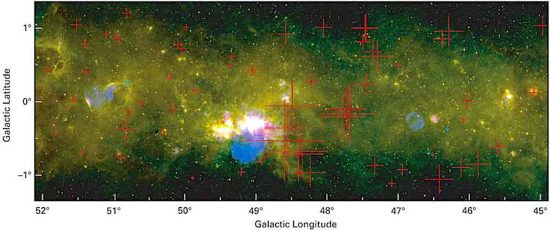
January 15, 2020
Charge separation drives galactic formation.
As written many times in the past, galaxies travel within a circuit of electricity flowing through the cosmos. Electricity organizes itself within masses of plasma that can be larger than galaxy clusters. Since plasma is primarily composed of neutral atoms, but with free electrons, protons and other charged particles in motion, electrical energy orders of magnitude more powerful than gravity is generated.
Fusion occurs, not in stellar cores, but on their surfaces. Fusion reactions can also occur when charge separation reaches a trigger point in ionized plasmas, releasing cosmic lightning bolts. Since a supernova results from stored electromagnetic energy release, as well (similar to a capacitor shorting out), electric charge becomes concentrated at one point, blasting out radiation across the entire electromagnetic spectrum, from radio to gamma rays. Elements heavier than hydrogen and helium are formed in those events.
Since power is calculated by the formula, P(W) = E(J) / t(s), a 5 billion Joule lightning bolt on Earth, lasting 2 seconds, releases 2.5 billion watts of power. One can imagine the power output from the double layer explosion of a star. It is no wonder that so much oxygen is concentrated in galactic spiral arms. They are where charge flows back to galactic cores, causing the greatest accumulation of electricity.
According to a recent press release, for spiral arms to form “…material must be constantly flushed into the spiral arms to replenish the supply of gas and dust.”
Astronomers from the University of Calgary in Canada, the Max Planck Institute for Astronomy (MPIA) in Heidelberg and other research institutions report that they found a portion of the Interstellar Medium they are calling the “warm ionized region” (WIM).
“High-energy radiation from hot stars causes the hydrogen gas of the WIM to be largely ionised. The results suggest that the WIM condenses in a narrow area near a spiral arm and gradually flows into it while cooling.”
Although the press release mentions ionized gas, it discusses the behavior of such gas in kinetic terms that mean “cooling” over long periods of time. Since the ISM and WIM are ionized, they are electrically conductive and are in the plasma state, which means that gravity will exert a weak force when compared to the 10^39 greater magnitude of the plasma’s electric field. Stars are not hydrogen fusion systems that forge new elements out of heat and pressure, they are the foci of Birkeland currents that make up circuits flowing around the galaxy.
Instead of gravity and cold gas, new stars are created in a boost of electric charge. The electric sheaths around new stars receive input from the galactic Birkeland currents in which they are immersed, and get pushed into the “glow” discharge state. Gravity has little, if anything, to do with the processes of star (or galaxy) formation.
Stephen Smith
The Thunderbolts Picture of the Day is generously supported by the Mainwaring Archive Foundation.












